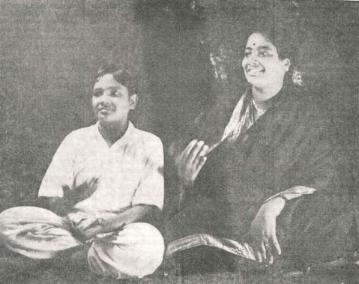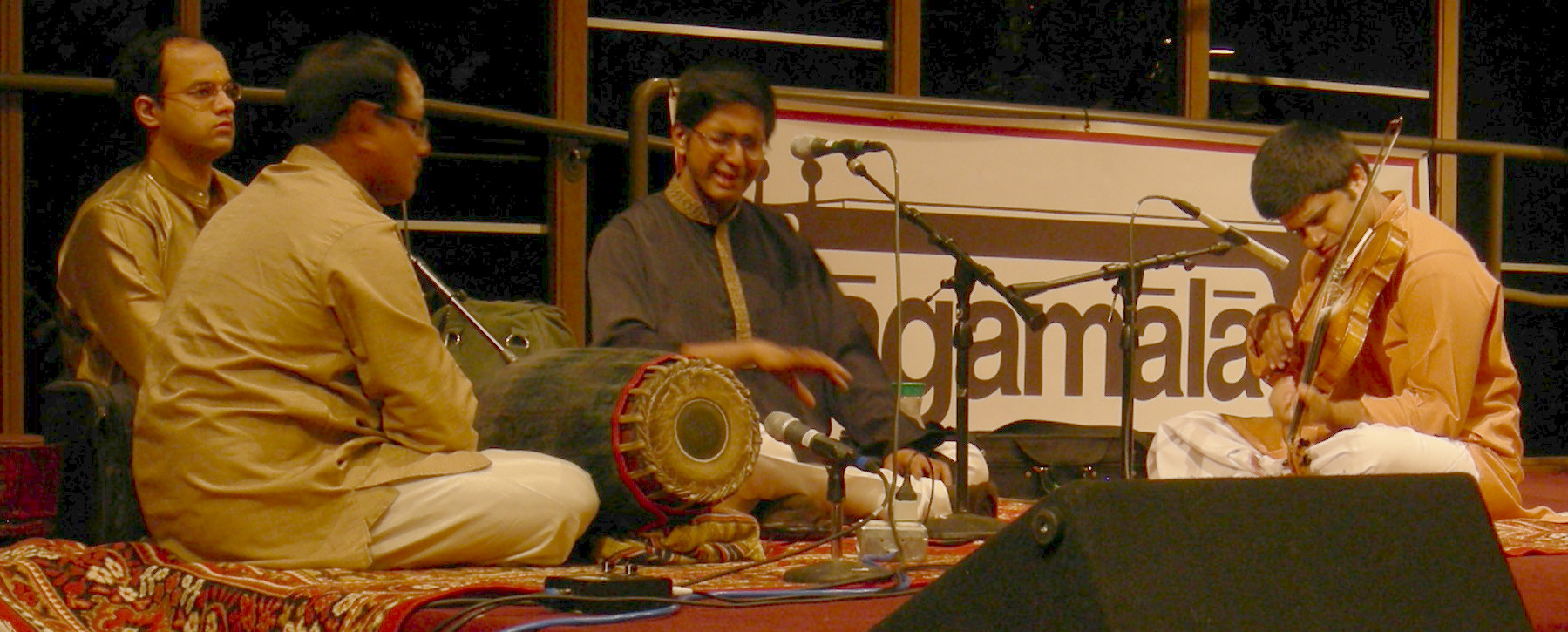Kutcheri on:
[Wikipedia]
[Google]
[Amazon]
 A katcheri is an assembly of musicians and audience in the context of
A katcheri is an assembly of musicians and audience in the context of
 The word ''katcheri'' used in the context of Carnatic music concert has its origin also as the Hindi language word "kachehri". Its adoption to connote the Carnatic music is traced to its initial meaning as a court, a government office where people gather. During the Maratha rule (1670–1800) in
The word ''katcheri'' used in the context of Carnatic music concert has its origin also as the Hindi language word "kachehri". Its adoption to connote the Carnatic music is traced to its initial meaning as a court, a government office where people gather. During the Maratha rule (1670–1800) in
 A katcheri of Carnatic music is generally of vocal music. The ambiance at a katcheri is "restrained and dignified" whereas in the case of the "
A katcheri of Carnatic music is generally of vocal music. The ambiance at a katcheri is "restrained and dignified" whereas in the case of the "
 A katcheri is an assembly of musicians and audience in the context of
A katcheri is an assembly of musicians and audience in the context of Carnatic music
Carnatic music (known as or in the Dravidian languages) is a system of music commonly associated with South India, including the modern Indian states of Andhra Pradesh, Karnataka, Kerala, Tamil Nadu, Telangana and southern Odisha.
It is o ...
. It is presented in the concert format. The music fraternity of connoisseurs and common people assemble at the katcheri venues to listen to classical music concerts of vidwan
In Hindu philosophy ''vidvān'' alludes to an expert in discrimination, to the one who is an expert in the Vedanta.
A ''vidwan'' (or ''vidvan'') is a person who has '' vidyā'' (knowledge) of a particular science or art. This term is usually used ...
s. Etymologically the word "katcheri" is derived from Urdu language
Urdu (; , , ) is an Indo-Aryan languages, Indo-Aryan language spoken chiefly in South Asia. It is the Languages of Pakistan, national language and ''lingua franca'' of Pakistan. In India, it is an Eighth Schedule to the Constitution of Indi ...
and in Hindi
Modern Standard Hindi (, ), commonly referred to as Hindi, is the Standard language, standardised variety of the Hindustani language written in the Devanagari script. It is an official language of India, official language of the Government ...
to mean a court of law.
Vocalist Ariyakudi Ramanuja Iyengar (1890–1967) established the modern ''katcheri'' (concert) traditions in Carnatic music. Among the women artists, M.L. Vasanthakumari and D.K. Pattammal pioneered the promotion of kutcheri culture. Among the most notable vocalists the first woman artist to receive the highest civilian award of Bharat Ratna
The Bharat Ratna (; ) is the highest Indian honours system, civilian award of the Republic of India. Instituted on 2 January 1954, the award is conferred in recognition of "exceptional service/performance of the highest order", without distin ...
in 1998 was M. S. Subbulakshmi
Madurai Shanmukhavadivu Subbulakshmi (16 September 1916 – 11 December 2004) was an Indian Carnatic singer. She was the first musician ever to be awarded the Bharat Ratna, India's highest civilian honour and also the first Indian musici ...
(1916–2004); who had started her career with her very first katcheri given when she was just 15 years old. It was a big hit among audience and music critics.
History
 The word ''katcheri'' used in the context of Carnatic music concert has its origin also as the Hindi language word "kachehri". Its adoption to connote the Carnatic music is traced to its initial meaning as a court, a government office where people gather. During the Maratha rule (1670–1800) in
The word ''katcheri'' used in the context of Carnatic music concert has its origin also as the Hindi language word "kachehri". Its adoption to connote the Carnatic music is traced to its initial meaning as a court, a government office where people gather. During the Maratha rule (1670–1800) in Tanjavur
Thanjavur (), also known as Thanjai, previously known as Tanjore, Pletcher 2010, p. 195 is a city in the Indian state of Tamil Nadu. It is the 12th biggest city in Tamil Nadu. Thanjavur is an important center of southern Indian religion, art ...
of present-day Tamil Nadu, it was probably adopted in the lexicon of Carnatic music, as, during this period, it was the durbar of the king. It was not a separate or remote place, but a hall, a venue where people were given an audience by the king to dispense with matters of the state. It also happened to be the place where people from all walks of life presented their "aspirations and concerns" before the king. It was at this place that musicians presented their musical achievements before the kings. It is this commonality of events at the same venue as the court or durbar that the Carnatic musical soirees presented by musicians of repute came to be termed as the ''kutcheri''. This, over the last more than a century, has not only literally known to represent a venue but also signifies a select gathering connoting the cultural significance of Carnatic music. This is the origin of concept of musical concerts which has dominated the music scenario of southern India.
Format
The modern format for the katcheri conceived by Ariyakudi Ramanuja Iyengar in the 1930s with a rich blend of traditional Carnatic music rendered by the past masters, particularly theTrinity of Carnatic music
The Trinity of Carnatic Music, also known as the Three Jewels of Carnatic Music, refers to the outstanding trio of composers, composer-musicians of Carnatic music in the 18th centuryTyagaraja, Muthuswami Dikshitar, and Syama Sastri. Prolific in co ...
of Tyagaraja
Sadguru Tyagaraja Swami ( Telugu: సద్గురు త్యాగరాజ స్వామి; 4 May 1767 – 6 January 1847), also known as Tyagayya, and in full as Kakarla Tyagabrahmam ( Telugu: కాకర్ల త్యాగబ ...
, Muthuswami Dikshitar
Muthuswami Dikshitar (Mudduswamy Dikshitar) (, 24 March 1776 – 21 October 1835), mononymously Dikshitar, was a South Indian poet, singer, veena player, and a prolific composer of Indian classical music. He was the youngest member of what is re ...
and Syama Sastri
Syama Sastri (Telugu language, Telugu : శ్యామ శాస్త్రి; ; 26 April 1762 – 1827) or Shyama Shastri was a musician and composer of Carnatic music. He was the oldest among the Trinity of Carnatic music, Tyagaraja and Mu ...
, was best suited to the wide and varied gamut of audience tastes; the aim was to make it just long enough to sustain the interest of the public in Carnatic Music. The repertoire was conceived taking into view the musical adaptations in theater and drama. The choice of the vocalist with a pliant voice and repertoire of songs that would attract the attention of the audience for long hours of the concert was considered essential. The katcheri also catered to the need of commercial entertainment and aesthetics. The duration of katcheri was prescribed by the Musical Academy of Madras to 3 hours. The concert starts with a varnam
Varṇam is a type of composition in the Carnatic music system that encapsulates the key features of a raga, and considered as a foundational element in the learning path. Varnams capture the essence of the ragam in terms of typical swara patt ...
, a form perfected by musicians of yore as it created a relaxed atmosphere to the vocalist leading to a wide spectrum of musical compositions. This is followed by many kritis
A ''kriti'' () is a form of musical composition in the Carnatic music literature. The Sanskrit common noun ''Kriti'' means 'creation' or 'work'.
A kriti forms the mental backbone of any typical Carnatic music concert and is the longer format o ...
(musical compositions) and ragas
A raga ( ; , ; ) is a melodic framework for improvisation in Indian classical music akin to a melodic mode. It is central to classical Indian music. Each raga consists of an array of melodic structures with musical motifs; and, from the perspec ...
(melodies). This sequence riveted the mood of the audience and enabled the performer to go through the performance with elan. The classical songs are preambled by an extended elaboration of melody called the alapana with balanced rhythm topped by pallavi
A pallavi is a refrain in carnatic music, commonly associated with South India. It is the first part of any formal composition ( Krithi) which has three segments – Pallavi, Anupallavi and Charanam (which can be one or more). Pallavi is usuall ...
(thematic lines of the song). The concert is concluded with rendering of padam (a musical composition), javali
Carnatic music (known as or in the Dravidian languages) is a system of music commonly associated with South India, including the modern Indian states of Andhra Pradesh, Karnataka, Kerala, Tamil Nadu, Telangana and southern Odisha.
It is o ...
, and songs with national themes which would hold the attention and appreciation of the audience.
 A katcheri of Carnatic music is generally of vocal music. The ambiance at a katcheri is "restrained and dignified" whereas in the case of the "
A katcheri of Carnatic music is generally of vocal music. The ambiance at a katcheri is "restrained and dignified" whereas in the case of the "mehfil
Mehfil or ''mahfil'' (Urdu: محفل), alternatively known as Bazm (Urdu: بزم) is a formal venue where indoor recreational activities such as poetry ( mushaira), singing, music, and dance are entertained in parts of the Indian subcontinent. ...
" which represents concert format of the Hindustani music
Hindustani classical music is the Indian classical music, classical music of the Indian subcontinent's northern regions. It may also be called North Indian classical music or ''Uttar Bhartiya shastriya sangeet''. The term ''shastriya sangeet'' ...
there is "characteristic abandon". In this format the katcheris have attracted highly talented musicians in recent times and involved hundreds of musicians in the genre of vocal music, vainikas, instrumentalists playing violin, flute and so forth. In the katcheri music format, songs are rendered in a medium and fast tempo. This compared to the Hindustani Concert, which is in a slow and very slow tempo, takes about half the time in rendering.
However, the 'katcheri' performance held a part of wedding receptions held in the presence of connoisseurs of music gives musicians opportunity present their musical repertoire and adaptation skills of compositions and erudite knowledge of music. The songs rendered in such katcheris highlight a particular raga duly informing the audience the nature of the melody which has a set of lines sung in a fixed rhythmic cycle. In such rendering each line of the song the refrain is rendered in different rhythmic styles with due adherence to the "metric structure of the set cycle". The theme of the songs covers many subjects.
Also, during the katcheris, a game known as "kanakari" is played in which challenges are posed to the audience with a clue to decipher an item concealed within a song. Another challenge posed is by rendering ten ragas or melodies symbolizing the ten directions which the audience are asked to identify and state which raga represents which direction. This highlights the musical skill of the musician and for this he is rewarded.
References
Bibliography
* * * * * *Further reading
* * * {{Authority control Carnatic music terminology * Indian styles of music South India Classical and art music traditions Culture of Karnataka Culture of Andhra Pradesh Kerala music